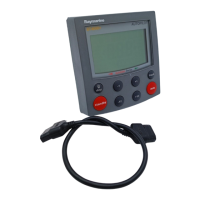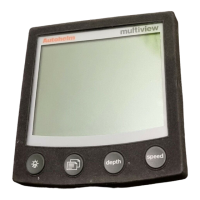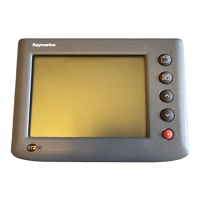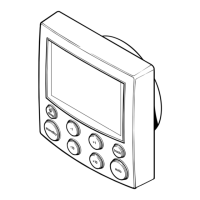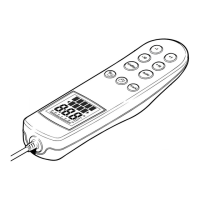22 ST4000+ Wheel & Tiller Autopilots: Owner’s Handbook
3 Advanced Operation
Setting waypoints
• Local variations in radio signal quality and changes in the tidal
stream can produce deviations from the desired track. When
setting waypoints, remember that deviations can occur.
• Thoroughly check along each track. Check up to 0.5 nm each side
of the track to ensure that there are no hazards within this zone.
Note: For the waypoint advance function to work, the last four
characters of adjacent waypoint names must be different.
3.2 Using Wind Vane mode
Note: You can only use Wind Vane mode if you have connected the
ST4000+ to a suitable wind instrument/vane providing SeaTalk or
NMEA wind direction information.
To use Wind Vane mode (also known as Vane mode), the ST4000+
must receive wind information from one of the following sources:
• SeaTalk wind instrument, connected to the ST4000+ via SeaTalk
• NMEA wind instrument
• Raymarine wind vane connected through a SeaTalk interface box
In Wind Vane mode the ST4000+ maintains a course relative to an
apparent wind angle. It uses wind trim to eliminate the effects of
turbulence and short term wind variations. This provides smooth and
precise performance with minimal power consumption.
When the ST4000+ is in Wind Vane mode it uses the fluxgate
compass as the primary heading reference. As changes in the
apparent wind angle occur, the ST4000+ adjusts the locked compass
heading to maintain the original apparent wind angle.
Selecting Wind Vane mode
You can select Wind Vane mode from either Standby or Auto mode:
1. Steady the boat onto the required apparent wind angle.
2. Press standby and auto together to select Wind Vane mode and
lock the current apparent wind angle:
• the display shows the locked heading (e.g. 128°) along with
the apparent wind angle (e.g.WIND 145P indicates an apparent
wind angle of 145° to port)
81131_7.book Page 22 Wednesday, March 17, 2004 3:59 PM
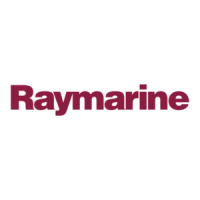
